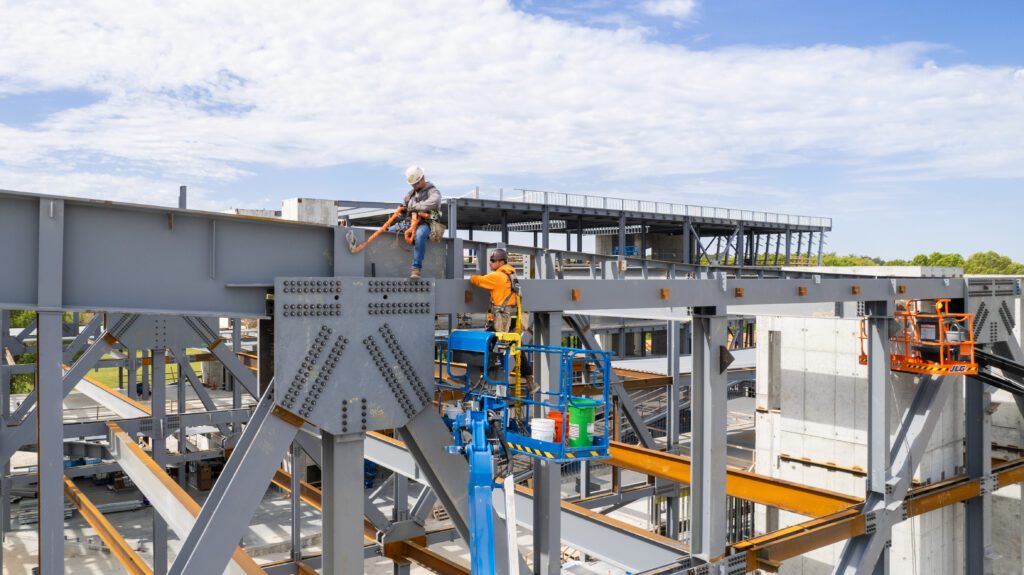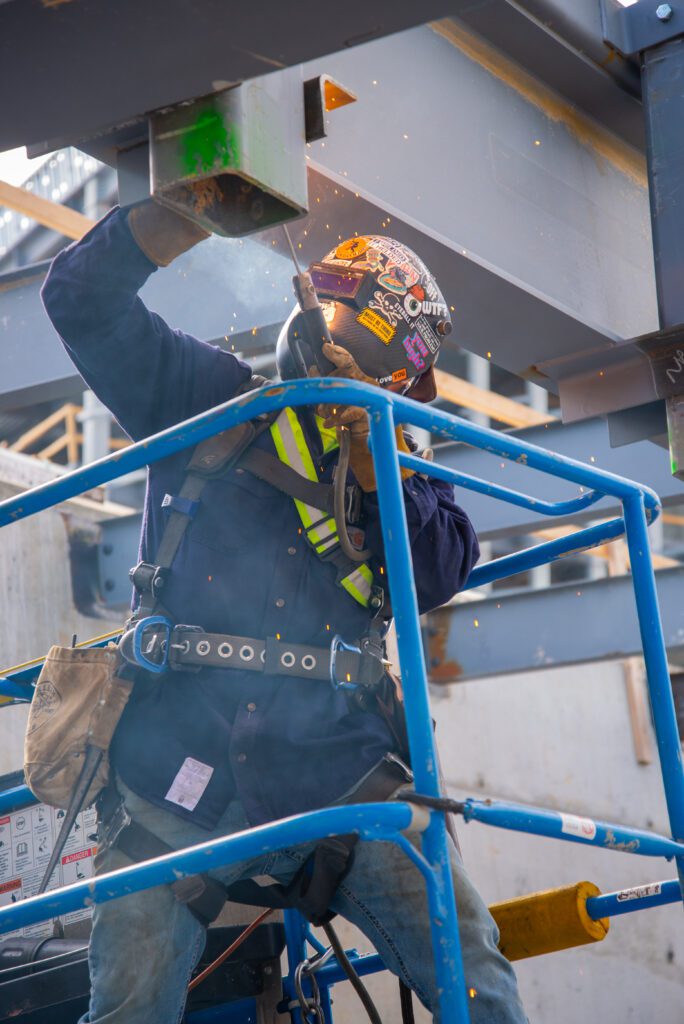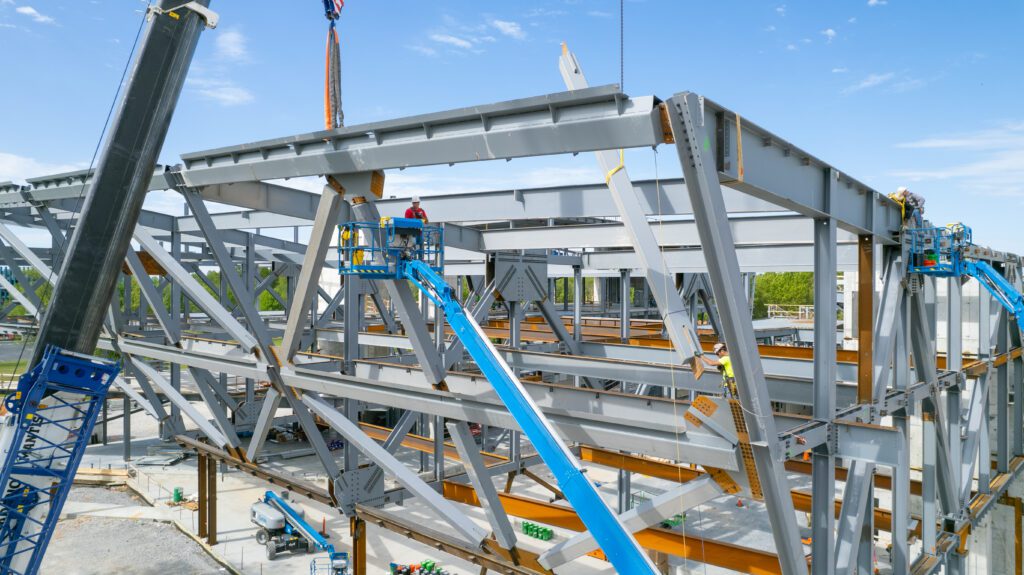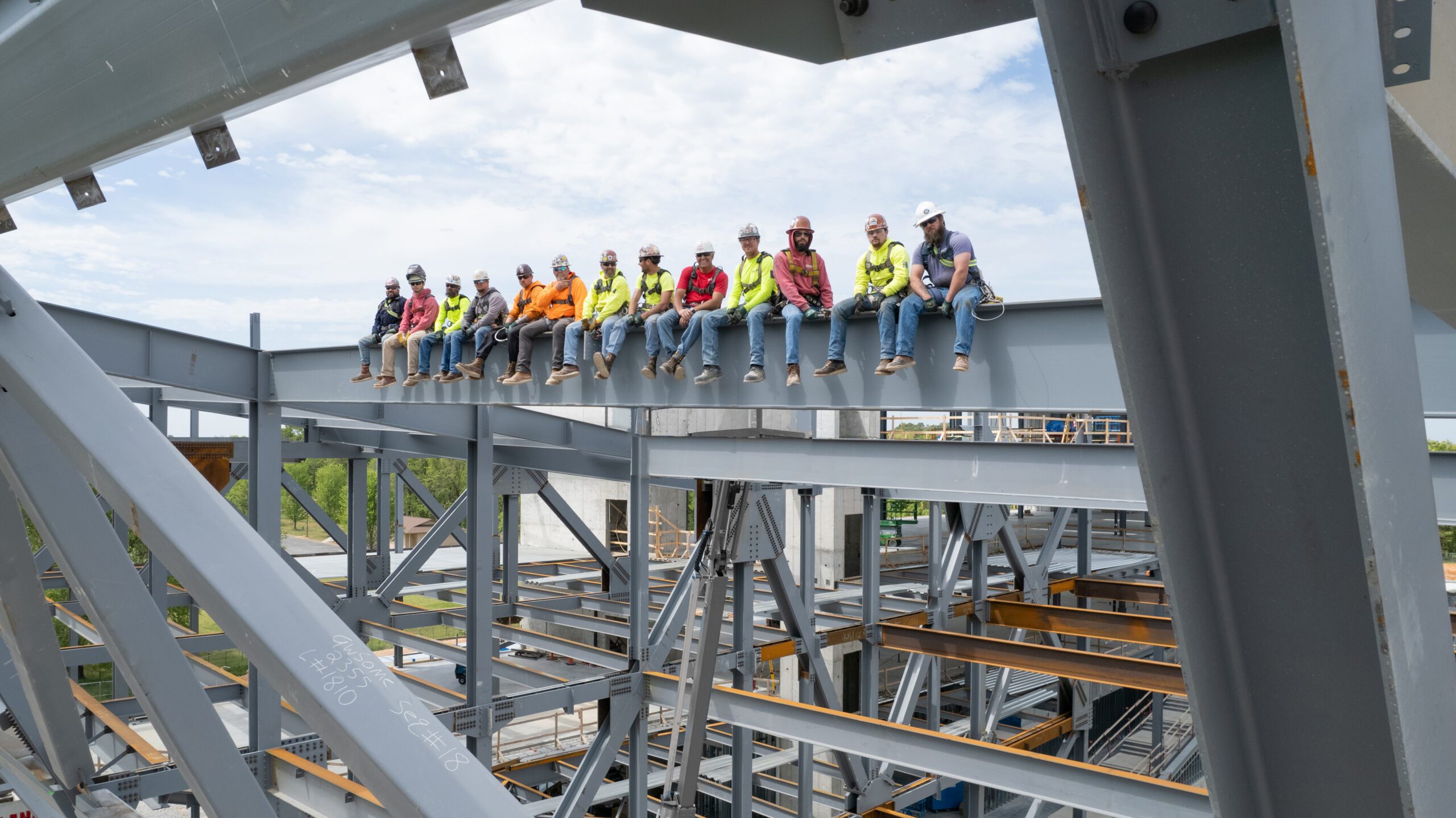We’ve talked a lot about the Alice L. Walton School of Medicine (AWSOM), but we thought it was important to also give the steel crew a day in the spotlight on this project. Our AWSOM steel crew didn’t just rise to the challenge; they redefined what was possible.

A Monumental Project Takes Shape
The construction of the 154,000-square-foot medical school in Bentonville, Arkansas, became not only a true architectural marvel but also one of the most monumental projects Crossland had ever built, featuring a one-of-a-kind cantilever truss system and a sprawling 2.5-acre green roof—an achievement never before attempted on this scale.
Engineering Without Limits
From the beginning, the project pushed the limits of engineering with complex steel trusses and a unitized curtain wall system that defied convention, no right angles, integrated solid brass structural fins, and a design unlike anything built before. The logistics were equally demanding, with a massive green roof requiring a sophisticated leak detection system beneath layers of waterproofing membranes and structural foam, all designed to ensure long-term durability and prevent costly repairs.

Strength in Steel
Even with its complexity, our team executed with precision and expertise. “The project was unlike anything we’d seen, yet we approached each portion with the same focus and skill we bring to every job,” shared Travis Day, Steel General Superintendent. The build pushed boundaries with more than 26 tons of steel in the cantilever alone, stretching an impressive 87 feet from its base.
Greg Hamersley, Steel Foreman Mentor, recalled, “I have to say, the truss sequence was really something else. It wasn’t something we’d ever done or even seen before. These cantilevers, supported by columns.”
Preparation Meets Precision
Preparation was key. “We started pre-planning this job a year before we actually began erecting the steel,” added John Dye, Steel Superintendent. Under the skilled supervision of Brad Hamilton, the job superintendent, and with the help of some of the country’s best crane operators, our crew meticulously fabricated and positioned the steel. Their expertise in handling heavy components like the 750-pounds-per-foot support beams was crucial.
David Brannon, Steel Construction Worker, reflected on the collaborative spirit of the project: “This job was big on team building. Normally, on smaller jobs, everyone had their own specific task, but this one had about ten or twelve working closely together. It really brought us together, making the whole project a great team effort.”

This wasn’t just a job; it became a testament to precision, teamwork, and innovation.
Watching those massive trusses come together, perfectly balanced, perfectly aligned, and standing strong after the supports were removed, was nothing short of incredible. Every crew member played a critical role, adapting on the fly, fine-tuning elevations, and working together in ways that pushed their limits and skills. Chris Barron, Lead Connector, added, “Putting them together felt like any other building at first, but the way these parts cantilevered out and how we had to keep adjusting their elevations as we went along was pretty wild. The truss sequence? Definitely a unique challenge.”
Innovation in Action: BIM Technology
The use of Building Information Modeling (BIM) software played a pivotal role in managing the complexities, ensuring seamless integration of structural, mechanical, and electrical systems, and avoiding potential conflicts. A big shout-out went to Humberto Albarran Garcia, the onsite BIM specialist, who expertly navigated the digital landscape to keep our construction on the cutting edge. This advanced planning and execution enabled the project not only to meet its timeline and budget but also to set new benchmarks for future ambitious builds.
“Everything went like it should have gone,” Travis proudly stated. The successful completion of the Alice L. Walton School of Medicine stood as a testament to what our steel crews were capable of accomplishing when faced with a challenge that seemed insurmountable.
“Seeing everything come together, where once there was just a skeleton of steel, was truly incredible,” said Greg.
Knowing our team built something that had never been done before? That’s what made this crew truly AWSOM-E!
Latest News
Looking for More?
Crossland Construction Expands in Texas with New San Marcos Office
MOmentum Bike Park Opens in Joplin: New 95-Acre Destination Built by Crossland Civil Division
Honoring Our Veterans: Army Veteran Zachary Smith Reflects on Service and Life at Crossland


